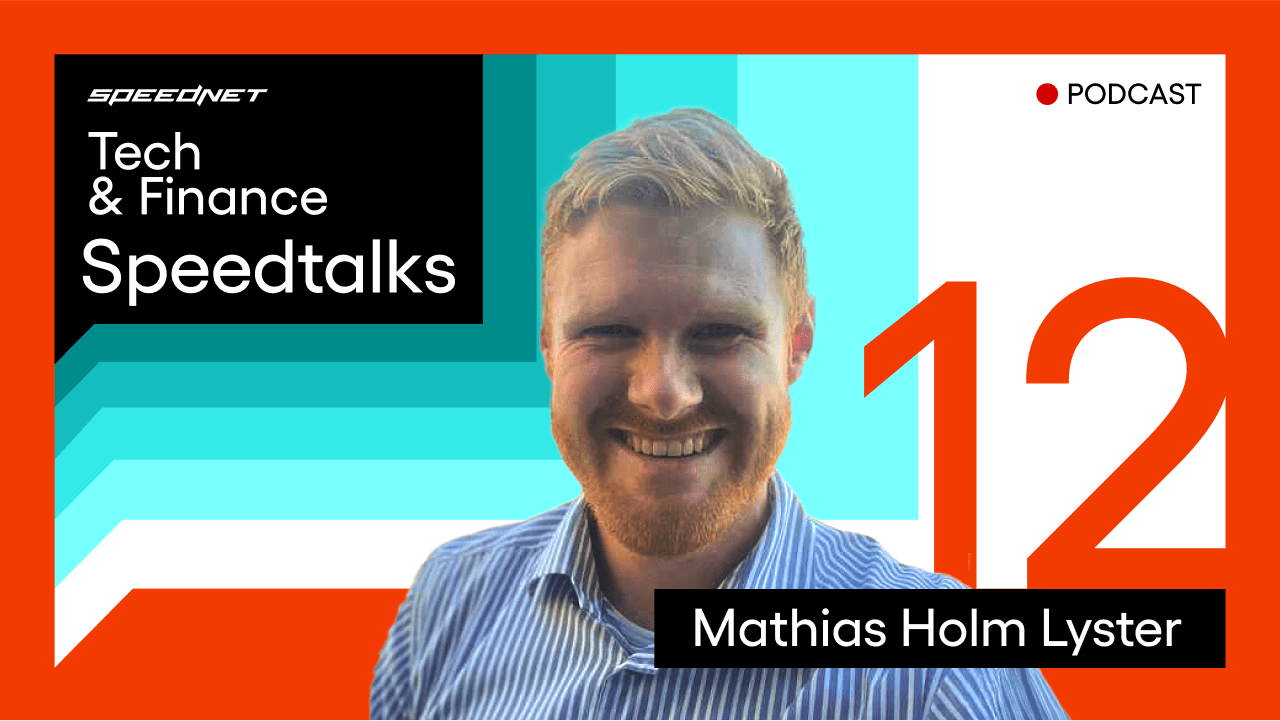012: AI in Banking with Mathias Holm Lyster


Transcription:
Michał Grela: Hello and welcome to another episode of Speedtalks, the podcast where we explore everything tech in the financial services industry. My guest today is Mathias Holm Lyster, Digitalisation and AI Lead, as well as Omnichannel Lead at Nykredit. Thank you for joining me today, Mathias.
Mathias Holm Lyster: Thank you.
MG: The topic of today’s conversation is Banking with AI: Overcoming Challenges. There’s a lot of buzz about banks and financial companies implementing AI, but today, I really want to dive into the practicalities of it—how it’s actually done. That’s why I invited Mathias, whose bread and butter is working hands-on with AI in a large financial services company. I’m really looking forward to your insights, Mathias. Could you start by sharing a bit more about your current role and Nykredit?
MHL: Thank you for having me. I’ve been with Nykredit for almost five years. I initially started as a Digital Lead, but in the past year, we’ve incorporated AI into that role because it’s become such an important area. My focus is on large transformational digital projects that have a significant impact on either advisors or customers.
Right now, we’re working on enhancing the meeting process for advisors. I’m leading a project where we aim to use AI from the initial customer contact for a meeting all the way through to generating and sending the meeting minutes. Currently, our focus is on improving the preparation and follow-up stages of this process. My role involves setting ambitions for these initiatives and driving the projects forward in collaboration with technical teams.
MG: If I understand correctly, the solution you’re building with AI is customer-facing, meaning customers will directly interact with it.
MHL: Exactly. That’s the goal. Next week, we’re rolling out a chatbot based on conversational AI. Since we’re in the financial sector, we’re taking a cautious approach. The chatbot will start with predefined responses, but the next step is to enable generative AI to enhance it.
We see this as a foundational step in bringing AI into our customer-facing tools. Another area we’re focusing on is automating the meeting minutes process. After every customer meeting, advisors need to send out a summary. The quality of these summaries varies widely—some advisors spend over an hour crafting high-quality summaries, which isn’t efficient, while others might take just two minutes, which often results in a lower-quality output. This inconsistency affects both customer experience and efficiency. We want to improve this process, ensuring both high quality and saving time for advisors.
“98% of advisors really see meeting summaries as something they want off their table.”
MG: So the goal is to standardise the process and free up employees to focus on other tasks rather than spending time on something as mundane as meeting notes, which I imagine isn’t their favorite task.
MHL: That’s exactly right. There are a few advisors who enjoy doing it, but the vast majority—98%—want it off their plates. Having done similar tasks myself earlier in my career, I know how tedious it can be to transcribe meetings and make sure the wording is polished. It’s also mentally draining because mistakes or errors can leave a poor impression on customers.
MG: How did you approach this project? What was the step-by-step process?
MHL: We’re fortunate at Nykredit to have a CX board that’s heavily focused on AI. They even formed a dedicated committee to push the AI agenda. They asked each business area to propose initiatives, and we were already working on a broader project to improve the customer meeting process.
We decided to take an end-to-end look at how digital solutions, including AI, could help. We identified areas where we could start making an impact. For example, the chatbot initiative came from our customer service department, but we expanded it to include generative AI capabilities.
We presented our ideas visually. First, we created process flows to map the journey, and then we developed mock-ups to showcase the vision. This approach helped us get buy-in from leadership and demonstrated the potential value of the project.
MG: That sounds like a very logical approach. You started with ideas directly from employees, structured them into a clear process, and secured buy-in by showing what the results could look like. What challenges did you encounter along the way?
“There’s so much attention on AI, so many investments, but there’s a big lack of plug-and-play solutions in the market.”
MHL: We initially expected a lot of pushback, especially from leaders concerned about how AI might impact their teams. But to our surprise, both advisors and customers have been very receptive. For instance, with our meeting minutes project, customers have often commented that they’re using similar tools at their workplaces.
One major challenge we didn’t anticipate was the lack of ready-made solutions. Even big tech players don’t have off-the-shelf tools that fully meet our needs. For example, Microsoft Teams isn’t designed to handle customer-facing tasks, particularly when it comes to data storage and consent management. Other tools we explored were geared more toward call centers, whereas we needed something tailored to advisors. So, that has actually been a surprise that there’s so much attention on AI, there’s so many investments in AI, but there’s a big lack of plug and play solutions in the market.
MG: It would be very handy to pick something off the shelf even if it’s going to be 70% ready and have that 30% customised, but it looks like we are not there yet, and the majority of the solutions that, let’s say, seem to be ready perhaps are only on the way.
MHL: Yeah, the bigger hurdles, though, were traditional IT issues—getting legacy systems and Salesforce and others to integrate, moving files between systems, and ensuring everything worked smoothly. These technical challenges were far more significant than the AI itself.
MG: It’s funny how you mentioned legacy and Salesforce, which is basically not necessarily a super rusty tool. It’s interesting that even modern platforms like Salesforce still create compatibility issues. Let’s shift focus to your chatbot project. Financial services remain a very people-centric industry. How do you balance the efficiency AI brings with ensuring customers still feel valued on a personal level?
“We will never force the customers into using any of the chatbots.”
MHL: That balance is critical. At Nykredit, our omnichannel strategy prioritises giving customers control and serving them on their terms. The same principle applies to AI.
For instance, if a customer doesn’t want AI to generate meeting transcripts, we’ll respect that, and the advisor will handle it manually. Similarly, with the chatbot, it will never be a gate that customers must go through. They’ll always have the option to speak directly with a person.
The chatbot is an additional channel, not a replacement. Many customers will likely use it for straightforward queries, but for more complex issues, we want them to have easy access to human advisors.
MG: Once both the chatbot and meeting minutes projects are live, what’s next for AI at Nykredit?
MHL: We’re looking to connect these two projects. The chatbot will focus on the early stages of customer interaction, such as capturing leads and scheduling meetings. On the other end, the meeting minutes tool will automate post-meeting tasks.
We want to expand the chatbot’s role to help customers prepare for meetings by submitting necessary documents like pay slips or property details. Similarly, we’re exploring ways to use AI to assist advisors in preparing for meetings, pulling together relevant data from systems like Salesforce.
Eventually, we aim to create a seamless end-to-end process, possibly involving AI agents that can handle routine tasks and communicate with each other. This would allow advisors to focus more on customer interactions and less on administrative work.
MG: That’s a great takeaway: using AI to let people focus on what they do best while automating tasks that don’t require human expertise.
MHL: Exactly. It’s also about creating solutions that people—both employees and customers—actually find valuable. If a tool doesn’t provide tangible benefits or is cumbersome to use, adoption will be low.
MG: Absolutely. AI implementations, like any project, need to deliver real value. Thank you, Mathias, for sharing your insights. I really appreciate how your approach prioritises both the human and technological aspects.
MHL: Thank you.




